INTRODUCTION
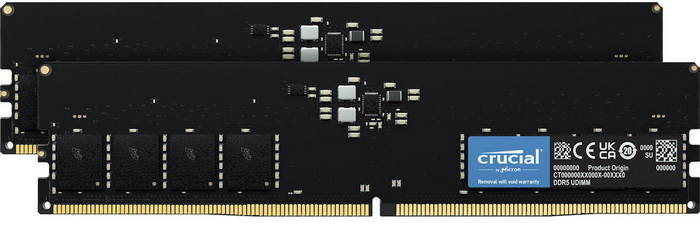
When DDR5 DRAM for the PC was first announced to the world in late 2020 most people figured that it would surpass DDR4 DRAM in every conceivable way and even though today there some 8GHz DDR5 RAM kits around there are countless more between 4.8GHz and 5.6GHz. Needless to say, when there are DDR4 kits in the market running at 5333MHz and with CAS latencies as low as CL20 it's obviously not easy justifying the existence of DDR5 kits at 4800MHz/5200MHz/5600MHz and with CAS latencies at around CL40. Still, such fast DDR4 kits are not available in capacities higher than 16GB (2x8GB) and so this is where DDR5 comes on top since right now one can even find 256GB kits (8x32GB) with speeds all the way up to 5600MHz (32/48GB @ 8GHz). Crucial may have yet to release their Ballistix line of high-performance DDR5 kits (i hope they do soon) but their "regular" DDR5 line was unveiled last year and today with me i have their 32GB 5600MHz CL45 Dual-Channel Kit.
We are an industry leader in innovative memory and storage solutions transforming how the world uses information to enrich life for all. With a relentless focus on our customers, technology leadership, and manufacturing and operational excellence, Micron delivers a rich portfolio of high-performance DRAM, NAND and NOR memory and storage products through our Micron® and Crucial® brands. Every day, the innovations that our people create fuel the data economy, enabling advances in artificial intelligence and 5G applications that unleash opportunities — from the data center to the intelligent edge and across the client and mobile user experience. To learn more about Micron Technology, Inc. (Nasdaq: MU), visit micron.com.
Just like with their past "regular" consumer oriented RAM the new DDR5 kits don't feature heatspreaders (still the black PCB does look nice) thus these are clearly low-profile models (just over 31mm in total height) aimed towards consumers on a budget. Currently this line is available in single (8/16/32GB) and dual (2x8/16/32GB) channel kits with frequencies going all the way up to 5600MHz (4800/5200/5600MHz), timings as low as CL40 (4800MHz CL40 - 5200MHz CL42 - 5600MHz CL46) and voltage set at 1.1V for the entire range. These RAM Kits feature single die modules by Micron, are EXPO and XMP 3.0 compatible and just like past lines Crucial covers them with a limited lifetime warranty. 5600MHz may not seem impressive but Crucial has yet to let me down so let's see what you can expect from their top DDR5 kit currently.
SPECIFICATIONS AND FEATURES

32GB DDR5 5600MHZ CL46
As expected, Crucial packs their “regular” line of DDR5 kits inside blister packages that allow you to see both modules from the front.
Just the two modules are placed inside the blister package.
The lack of a heatspreader may not look that great (and pushing voltages considerably is not advised) but thanks to the black PCB used by Crucial these modules do look nice.
The other side of the PCB is empty.
With a height of just 31.15mm these modules are ideal for mATX/mITX systems.
Just how low profile these are is very easy to see since i placed them right next to the Ripjaws S5 by G.Skill, FURY Renegade RGB by Kingston and the Trinity RGB and JetBlack by Neo Forza.
As mentioned already the Ripjaws S5 lack RGB lighting so they don’t really stand out.
Thanks to AIDA64 we have more detailed information on the kit.
TEST BED
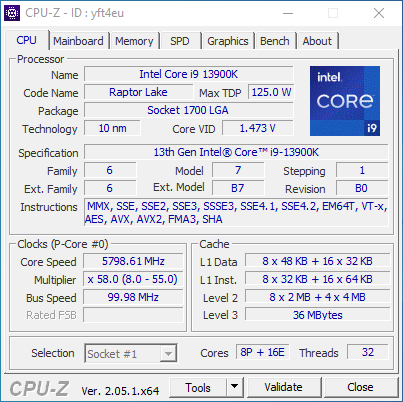

TESTING METHODOLOGY

Thanks to XMP 3.0 and EXPO profiles the only thing one needs to do in order to run a brand new RAM kit at its advertised frequency, timings and voltages is to choose/enable it from within the BIOS and reboot. That being said if you're into overclocking you may not wish to use the main XMP/EXPO profile but instead to choose your very own frequency, timings and voltages to achieve even higher performance numbers and that's exactly what we'll also be doing during our DDR5 tests. To be more specific aside testing each kit with its XMP profile I'll also be upping the voltages (up to 1.4V for 1.35V kits – even though most kits can function at higher voltages I don’t recommend doing so - RAM modules that use 1.4V/1.45V/1.5V will be tested up to 1.45V/1.5V/1.55V respectively) and frequencies (200MHZ increments) until i find the maximum achievable stable frequency (those results will be entered into the OC charts). I also thought about upping voltages and reducing timings instead of increasing the frequency of the modules as high as it can go (always stable and without using 0.5-1V over stock) but the end results are pretty much identical.
As for the how I'll be testing each DDR5 Dual-Kit to arrive in the lab well there aren't that many benchmark programs that only test RAM (or at least RAM and CPU without anything else coming into play) but I’ve got most of them and so you will be seeing results from following benchmarking programs, AIDA64 Engineer Edition, Cinebench Release 23, MaxMemm2, Passmark Performance Test v10.1, Sisoftware Sandra Titanium and WPrime v2.11. All tests are performed on a fresh Windows 10 Pro x64 installation (complete with all updates until the day of this review) and are repeated a total of 6 times after which the average numbers get recorded into the charts.
* Since you all decided for me to use the Intel Core I9-13900K for graphics cards tests I’ll also be using that for DDR5 tests (5.8GHz P-Cores / 4.7GHz E-Cores / RING 4.9GHz) and in order to showcase potential gains between stock and overclocked clocks/frequencies I’ll also be using Forza Horizon 5 (1080p/Extreme Graphics). Still do keep in mind that i can't dedicate a high-end GPU solely for DDR5 reviews so each time i review such a kit I’ll be using a different chart (the card used will be listed above).
TEST RESULTS - XMP 3.0 PROFILE

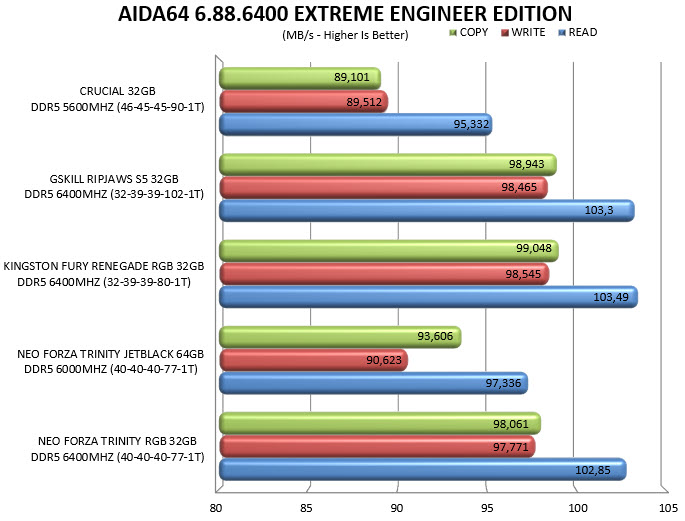





TEST RESULTS – OVERCLOCK



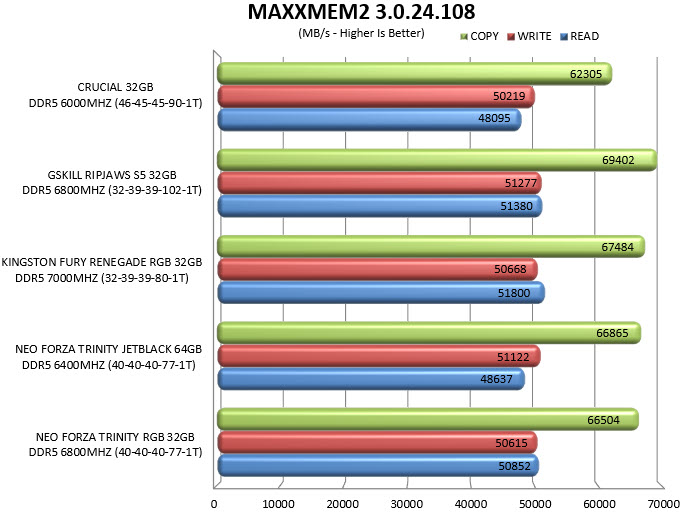



TEST RESULTS – FORZA HORIZON 5

CONCLUSION
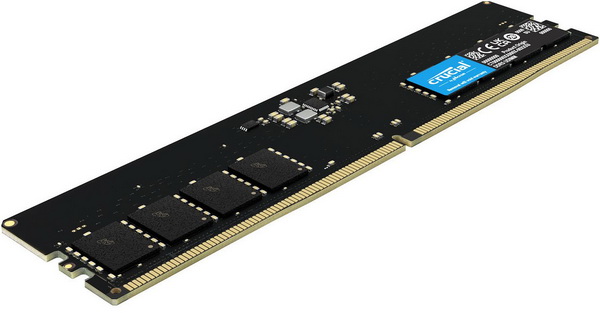
The DDR5 RAM kits offered by Crucial are obviously not meant for everyone out there and that’s the reason I’m really surprised they haven’t released a new Ballistix line yet. That being said this kit did quite well, not only at stock but also at 6GHz with just 1.2V (stable). Unfortunately, the lack of a heatspreader means that over 1.2V the kit begins to get quite hot and so I don’t recommend doing so (besides, 6GHz should be plenty for most systems). Also having a total of 3 available frequencies almost 2 years in is not something I was expecting, not from Crucial. Yes, these lines can easily cover the needs of most people on a budget but unlike in the past this time over enthusiasts, overclockers and even some gamers have nothing to choose from. As for the lifetime limited warranty that’s always a good thing to have regardless of kit specs.
With a current retail price set at USD103.99 inside the USA (Amazon.com) and at 108.36Euros inside the EU (Amazon.de) the 32GB DDR5 5600MHz CL46 Dual-Channel Kit by Crucial is priced well. Yes, this isn’t a kit that will break performance records and impress your friends nor is it a kit that has huge overclocking potential but it does well overall, is covered by a limited lifetime warranty (and by Crucial at that) and is priced just right and that’s why it gets the Golden Award.

PROS
- Quality
- Overall Performance
- Low Profile Black PCB
- Limited Lifetime Warranty
- Price (For Some)
CONS
- Lack Of RGB Lighting (For Some)
- Lack Of Heatspreaders
- Available Kit Selection

 O-Sense
O-Sense





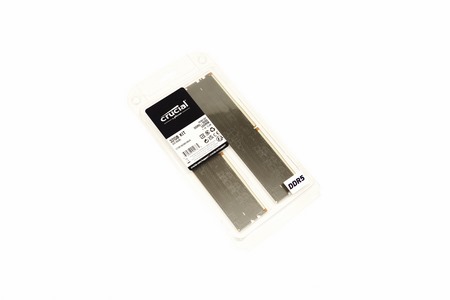









.png)

